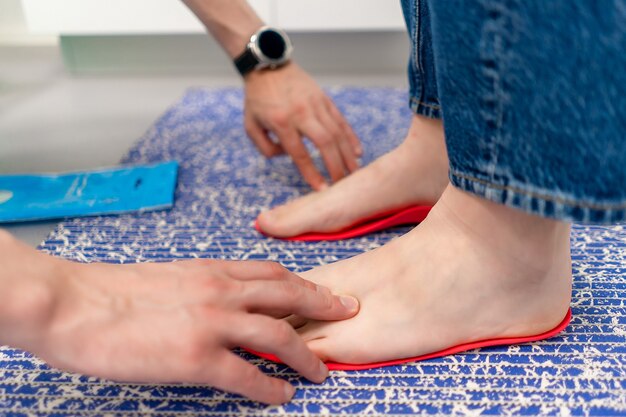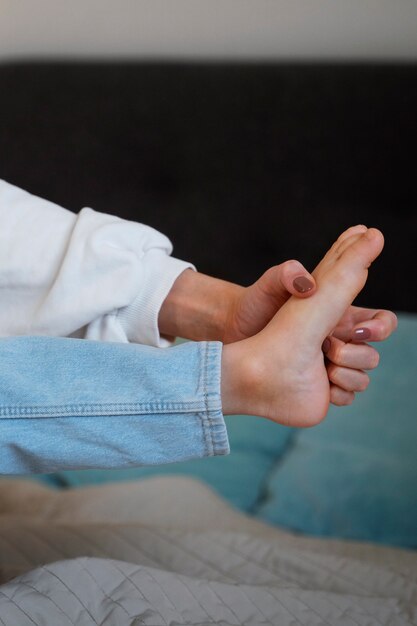Alleviating Foot Problems with Insoles: An Extensive Aide

types of foot problems insoles can alleviate and from the second we awaken to the time we resign to bed, our feet indefatigably support us, permitting us to explore through our day to day schedules easily. Nonetheless, types of foot problems and insoles can alleviate, in spite of their versatility, our feet are not resistant to different issues and distresses. Luckily, progressions in footwear innovation have prompted the improvement of particular insoles intended to mitigate an extensive variety of foot issues. In this complete aide, we’ll investigate the kinds of foot issues that insoles can help lighten, giving bits of knowledge into how these basic supplements can have a massive effect in our general foot wellbeing and prosperity.
1. Prologue to Types of Foot Problems Insoles can Alleviate
Our feet are perplexing designs made out of bones, muscles, ligaments, tendons, and nerves, all cooperating to give steadiness, equilibrium, and portability. Be that as it may, because of variables like hereditary qualities, way of life, and ecological impacts, our feet are defenseless to different diseases and conditions. Normal foot issues include:

- Plantar Fasciitis: Portrayed by irritation of the plantar sash, a thick band of tissue that stumbles into the lower part of the foot, plantar fasciitis causes excruciating feeling in the impact point, especially with the most important phases toward the beginning of the day.
- Flat Feet (Pes Planus): Level feet happen when the curves of the feet breakdown, making the whole bottom connect with the ground. This condition can prompt torment, weariness, and trouble with exercises that require delayed standing or strolling.
- High Curves (Pes Cavus): Inverse to level feet, high curves bring about extreme shape of the foot’s curve, prompting decreased shock retention and expanded strain on the impact point and wad of the foot. This can add to issues, for example, heel torment and metatarsalgia.
- Overpronation and Supination: Overpronation alludes to inordinate internal moving of the foot during step, while supination includes outward rolling. The two circumstances can prompt misalignment issues, flimsiness, and expanded chance of wounds, for example, lower leg injuries and stress cracks.
- Morton’s Neuroma: This difficult condition happens when the tissue around one of the nerves prompting the toes becomes thickened, frequently causing a sharp, consuming aggravation in the wad of the foot.
- Bunions: Bunions are hard knocks that structure at the foundation of the huge toe, bringing about the misalignment of the joint and causing torment, enlarging, and trouble with shoe wear.
- Achilles Tendonitis: Portrayed by aggravation of the Achilles ligament, which associates the lower leg muscles to the heel bone, Achilles tendonitis causes agony and firmness toward the rear of the heel, especially during actual work.
2. Types of Foot Problems and How Insoles Can Help
Insoles, otherwise called shoe embeds or orthotics, are intended to offer help, padding, and arrangement to the feet, assisting with easing different foot issues and work on by and large solace. Contingent upon the particular necessities of the individual, insoles come in various materials, shapes, and plans. This is the way insoles can assist with tending to normal foot issues:

- Plantar Fasciitis: Insoles for plantar fasciitis frequently include a profound impact point cup and curve backing to convey pressure equally across the foot and diminish burden on the plantar belt. Furthermore, they might consolidate padding materials, for example, gel or froth to give shock retention and ease heel torment.
- Flat Feet: Insoles for level feet are intended to offer curve help and advance appropriate arrangement of the foot. They regularly highlight a firm curve backing to forestall overpronation and disperse weight equally along the foot’s surface. A few insoles may likewise incorporate a metatarsal cushion to help the chunk of the foot and ease pressure.
- High Arches: Insoles for high curves mean to give padding and support to make up for the absence of regular shock ingestion. They frequently include a molded plan with additional cushioning under the curve and heel to retain influence and lessen pressure focuses. Furthermore, they might have a profound impact point cup to settle the foot and forestall extreme supination.
- Overpronation and Supination: Insoles for overpronation and supination center around revising walk irregularities and advancing appropriate foot arrangement. They regularly include a mix of curve support, average or sidelong wedges, and movement control innovation to decrease exorbitant pronation or supination and further develop dependability during development.
- Morton’s Neuroma: Insoles for Morton’s neuroma intend to assuage tension on the impacted nerve and give padding to lessen agony and inconvenience. They might include a metatarsal cushion or vault under the wad of the foot to reallocate weight away from the impacted region and lighten squeezing of the nerve.
- Bunions: Insoles for bunions are intended to give padding and support to lessen erosion and tension on the hard distension. They frequently highlight a wide and profound toe box to oblige the bunion and forestall scouring against the shoe. Also, they might consolidate cushioning or gel supplements to give alleviation from agony and irritation.
- Achilles Tendonitis: Insoles for Achilles tendonitis expect to lessen stress on the Achilles ligament and advance appropriate biomechanics during development. They might include a somewhat raised heel to lessen pressure on the ligament and empower a more regular step. Furthermore, they might give padding and backing to the heel and curve to ease agony and distress.
3. Picking the Right Insoles
While choosing insoles for explicit foot issues, it’s fundamental to consider factors, for example, material, support level, padding, and fit. Here are a few ways to pick the right insoles:

- Consult a Medical services Professional: In the event that you’re uncertain about which sort of insoles to pick or on the other hand assuming you have an extreme foot condition, talk with a podiatrist or muscular subject matter expert. They can give customized proposals in light of your singular requirements and foot life systems.
- Consider Your Foot Type: Decide if you have level feet, high curves, or a nonpartisan curve, as this will impact the kind of help and padding you really want. A few insoles are planned explicitly for specific foot types to address biomechanical issues and give ideal solace and backing.
- Assess Your Activities: Consider the exercises you take part in consistently, as this will affect the sort of insoles you want. For instance, in the event that you’re a competitor or spend extended periods of time on your feet at work, you might require insoles with additional padding and shock assimilation to diminish exhaustion and forestall wounds.
- Try Different Styles: Trial with various styles and brands of insoles to find the one that feels generally good and steady for your feet. Remember that it might take an experimentation to see as the ideal fit, so cheer up on the off chance that the principal pair you attempt doesn’t work out.
- Check for Legitimate Fit: Guarantee that the insoles fit cozily inside your shoes and offer sufficient help to the curves and heels. Stay away from insoles that are excessively thin or excessively wide for your feet, as they might cause uneasiness and fuel foot issues.
- Replace Regularly: Types of foot problems insoles can alleviate and insoles commonly have a life expectancy of a half year to a year, contingent upon use and wear. Supplant your insoles routinely to guarantee they keep on offering ideal help and padding for your feet.
Conclusion:
Types of foot problems insoles can alleviate are straightforward yet powerful instruments for reducing an extensive variety of foot issues, from plantar fasciitis
